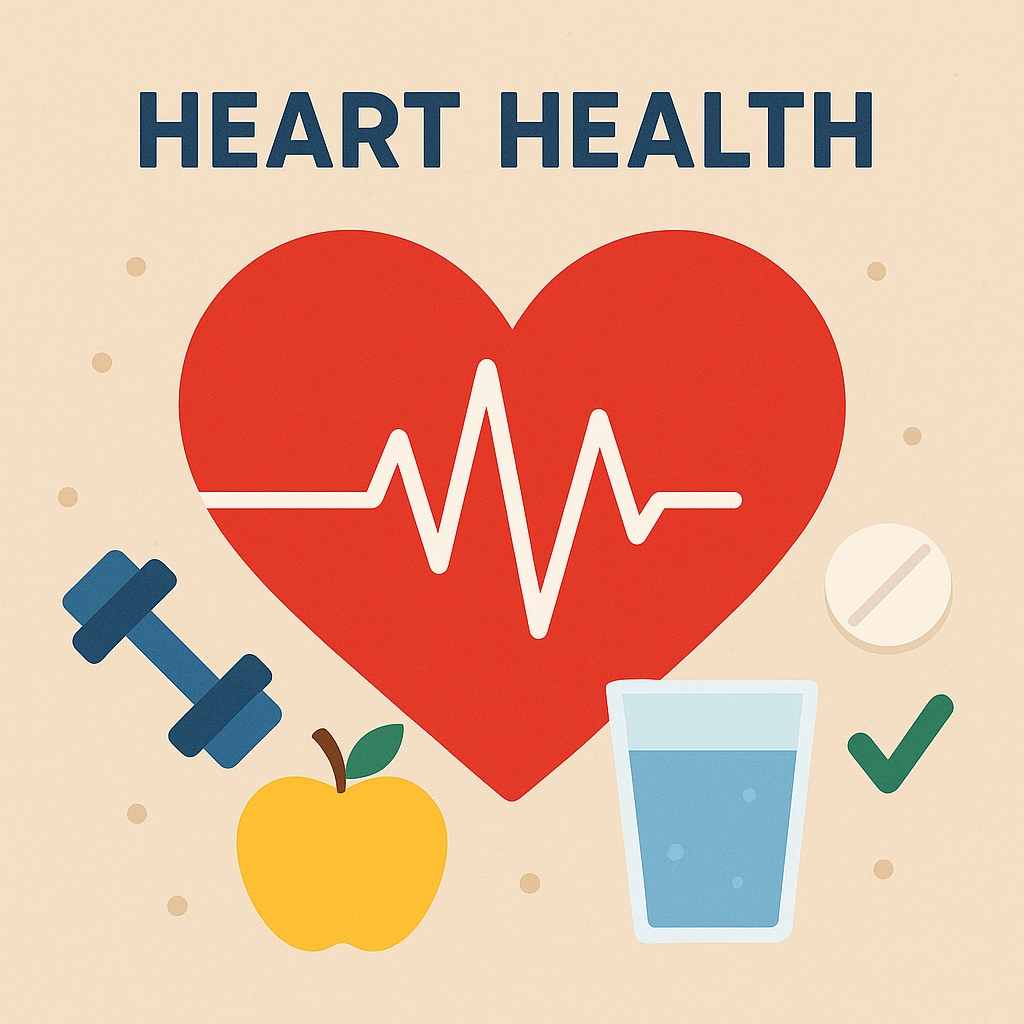Heart Attack (social issue) 💝
Heart Attack: Understanding, Recognizing, and Preventing a Critical Event.
A heart attack, medically known as a myocardial infarction (MI), is a critical medical emergency where the blood flow to a part of the heart muscle is severely reduced or completely blocked. This blockage, typically due to a buildup of fatty, cholesterol-containing deposits called plaque in the coronary arteries, deprives the heart muscle of oxygen. Without prompt restoration of blood flow, the affected heart muscle can suffer permanent damage, potentially leading to life-threatening complications.
This content aims to provide authenticated information on heart attacks, drawing from reputable sources such as the American Heart Association (AHA), the Mayo Clinic, and the National Heart, Lung, and Blood Institute (NHLBI).
Who is Most Affected by Heart Attacks?
While a heart attack can strike anyone, certain demographics and risk factors significantly increase susceptibility. Understanding these can help individuals assess their personal risk and take proactive measures.
* Age and Gender:
* Men: Generally have a higher risk of heart attack at younger ages. The risk significantly increases for men over 45.
* Women: While often perceived as a "man's disease," heart disease is the leading cause of death for women. Their risk increases after menopause, typically around age 50-55. Women may also experience different or more subtle symptoms than men.
* Family History and Genetics: A strong family history of heart disease, especially in first-degree relatives (parents or siblings) who experienced heart attacks at a younger age (under 55 for females, under 65 for males), significantly elevates an individual's risk.
* Race and Ethnicity: Certain racial and ethnic groups, including Black, Mexican American, Native American, and Native Hawaiian individuals, face disproportionately higher rates of heart disease and associated risk factors like high blood pressure and diabetes. This is often linked to a complex interplay of genetic predispositions and adverse social determinants of health, including limited access to healthcare and healthy foods.
* Existing Medical Conditions: Individuals with conditions such as:
* High blood pressure (hypertension)
* High cholesterol (dyslipidemia)
* Diabetes (Type 1 or Type 2)
* Obesity
* Metabolic syndrome (a cluster of conditions that increase risk)
* History of preeclampsia during pregnancy (for women)
are at a substantially higher risk.
Recognizing the Warning Signs: When to Act Immediately
Prompt recognition of heart attack symptoms is crucial for survival and minimizing heart muscle damage. While chest pain is the most common symptom, it's vital to remember that symptoms can vary, especially in women.
Common Symptoms (seek immediate medical attention –
* Chest Pain or Discomfort: Often described as pressure, tightness, squeezing, aching, or a feeling of fullness in the center of the chest. It may last for more than a few minutes, or go away and come back.
* Pain or Discomfort in Other Areas of the Upper Body: This can include pain that radiates to one or both arms (often the left), the back, neck, jaw, stomach, or teeth.
* Shortness of Breath: May occur with or without chest discomfort.
* Cold Sweat: Sudden, unexplained sweating.
* Nausea or Vomiting: Feeling sick to your stomach.
* Lightheadedness or Sudden
Dizziness: A feeling of faintness.
* Unusual Fatigue: Especially in women, this can be a prominent symptom for days or weeks leading up to a heart attack.
* Anxiety: An overwhelming feeling of dread or anxiety.
Important Note for Women: Women are more likely to experience symptoms like shortness of breath, nausea/vomiting, back or jaw pain, and unusual fatigue, sometimes without the classic chest pain. Don't dismiss these signs.
Prevention: Taking Charge of Your Heart Health
Many risk factors for heart attacks are modifiable, making prevention largely within an individual's control.
* Healthy Diet: Emphasize a diet rich in fruits, vegetables, whole grains, lean proteins, and healthy fats (e.g., olive oil). Limit saturated and trans fats, cholesterol, added sugars, and sodium.
* Regular Physical Activity: Aim for at least 150 minutes of moderate-intensity aerobic activity or 75 minutes of vigorous-intensity activity per week.
* Maintain a Healthy Weight: Losing even a small amount of excess weight can significantly reduce heart attack risk.
* Quit Smoking and Avoid Secondhand Smoke: Tobacco use is a major preventable risk factor.
* Manage Underlying Health Conditions: Effectively control blood pressure, cholesterol, and diabetes through medication and lifestyle changes as advised by a healthcare professional.
* Limit Alcohol Consumption: If you drink, do so in moderation.
* Manage Stress: Chronic stress can contribute to heart disease. Practice stress-reducing techniques like meditation, yoga, or spending time in nature.
* Regular Medical Check-ups: Consult your doctor regularly to monitor your heart health, discuss any concerns, and receive personalized advice.
A heart attack is a serious event, but understanding its symptoms, risk factors, and preventive measures can empower individuals to protect their heart health and act swiftly if an emergency arises. Always consult with qualified medical professionals for diagnosis and treatment.
